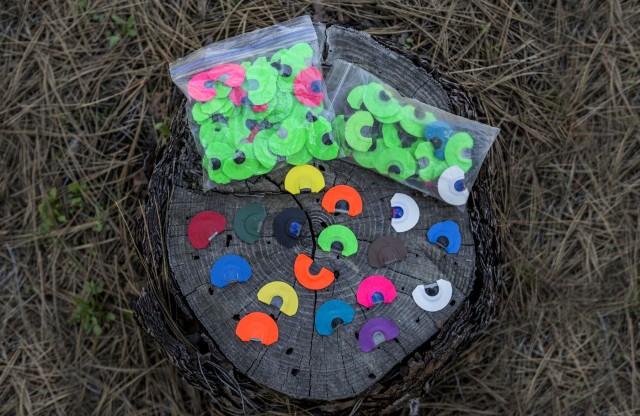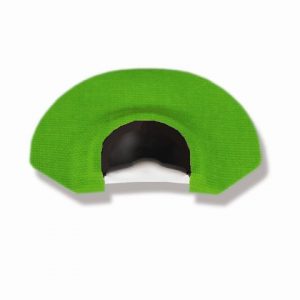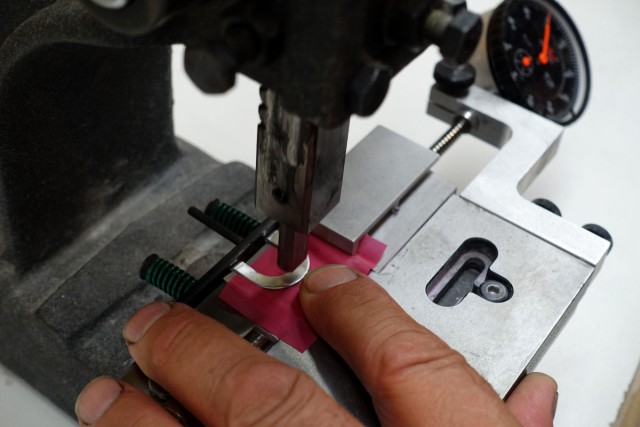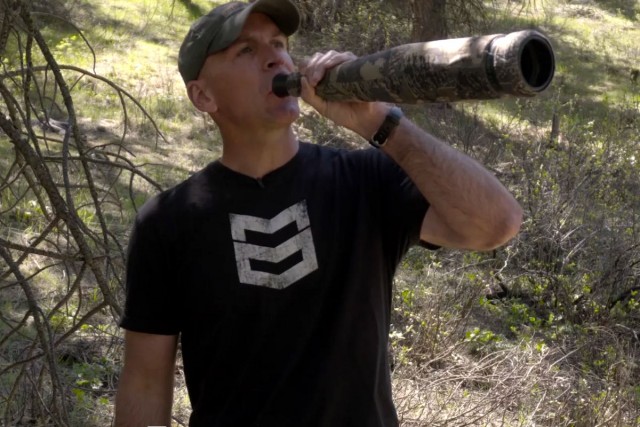Master Elk Calling With Diaphragms


First off, I want to apologize for not sending out any elk hunting content in the last month. I’ve been getting several email and messages in the last week or two wondering what’s going on….evidently elk hunters are needing an elk fix to get them through the next few months! It has been absolutely crazy on my end, but it has been good. I am working on a huge elk hunting project, and you are going to be the first to see it when it goes live in a few weeks. Like everything else on Elk101.com, this new project is focused on elk hunting education and content, and I’m excited to share it with you soon!
Speaking of content, the first of two Gritty Bowmen podcasts I did with Brian Call last month is up and available to watch or listen to. Click here to check it out:
And watch for Part 2 coming soon….there is far more good content in Part 2, and we answer several of the top questions that were sent in by Elk101.com followers several weeks ago.
Speaking of content and questions, I received an email last week from a follower who was struggling to make good sounding elk calls with a diaphragm. He was looking for advice on another style of elk call that would enable him to make good sounding calls, but not involve learning how to use a diaphragm. I tried really hard to sway him back toward diaphragm calls, but I’m not sure I convinced him and I ended up recommending a couple of options just in case it didn’t work out. But here is what I shared with him:
When it comes to using diaphragm elk calls, there are three reasons why I feel they excel over any other style of elk call: versatility, realism, and being “hands-free”.
It is hard to argue that there is a more versatile option for calling elk than the diaphragm call. With a little practice, you can effectively make every sound an elk makes with one diaphragm. And while many other styles of elk calls sound pretty good, the level of realism that is possible to achieve with a diaphragm elk is unmatched. Throw in the ability to use the diaphragm call while both of your hands are otherwise occupied (like when drawing a bow), and it’s hard to imagine that anyone would want to use anything else.
There is, however, one reason why an elk hunter might choose to not use a diaphragm elk call, and that one reason is often enough to outweigh all of the reasons to use them. The one factor that keeps most elk hunters from utilizing a diaphragm call is the difficulty they have in learning to use them. Fortunately, I’ve found a few tips to share to get you over the hurdle and get you confidently using diaphragm elk calls on your next elk hunt.
Whether you think you absolutely can’t use a diaphragm elk call, or you struggle to make good-sounding elk calls with a diaphragm, I have a few things I’d like to share to hopefully help you out. To help illustrate how to improve as an elk caller, I want to point out why I feel most elk hunters struggle with diaphragm calls. Here are what I feel are the top 3 reasons why elk hunters struggle to master the diaphragm elk call, and what you can do to get over the hurdle.
 First, most elk hunters who struggle with diaphragm calls are using the wrong call. I’m not going to flash a sponsor logo at this point and tell you which brand of call you need to be using, but instead, I want to point out that there are several options that absolutely make a difference in your ability to use a diaphragm elk call. It isn’t uncommon to have multiple options from one call to the next, even from the same manufacturer. Features like frame design, frame width, latex configuration, latex thickness, latex stretch, and tape size all contribute to the sounds you are able to – or not able to – make. Additionally, each different configuration of these features will create a different experience and sound for different users. With literally hundreds of diaphragm options to choose from, how do you select the one that is best?
First, most elk hunters who struggle with diaphragm calls are using the wrong call. I’m not going to flash a sponsor logo at this point and tell you which brand of call you need to be using, but instead, I want to point out that there are several options that absolutely make a difference in your ability to use a diaphragm elk call. It isn’t uncommon to have multiple options from one call to the next, even from the same manufacturer. Features like frame design, frame width, latex configuration, latex thickness, latex stretch, and tape size all contribute to the sounds you are able to – or not able to – make. Additionally, each different configuration of these features will create a different experience and sound for different users. With literally hundreds of diaphragm options to choose from, how do you select the one that is best?
The very best elk call for me, might not work at all for you. Each mouth and calling technique is different, so it’s important to find a call that you are comfortable with, and that you are confident in using. But, if you are struggling to find one that is comfortable or that you are able to use effectively, there are a few things to consider.
I had a gentleman come up to me after an elk calling seminar I conducted a few years ago, and ask me to help him with his elk calling. I love these one-on-one opportunities to talk elk calling, so we moved off to the side of the seminar area and he pulled out his call. Instantly, I knew I had my work cut out for me. The sound that came from that call was completely unidentifiable, but in any form, it was not an elk sound. Additionally, the amount of air that was gusting out of his mouth was enough to make the state of Wyoming jealous. And I can’t tell you how I kept from wincing when my face was splattered with enough spit to shine two old pairs of hunting boots. He pulled the call out of his mouth and said, “See, I just can’t use diaphragm calls”, and in that moment, I mostly agreed with him! But then I asked him to show me his call.
 As he held up the call, I noticed several things besides the fact that there was less saliva dripping off the call than there was dripping off my face. First, the frame was incredibly wide, which can make it difficult to effectively seal off and control the air flow and the resulting sound. Secondly, the latex that was used in the call was very thick, which can frustrate even the most experienced callers. And lastly, there were three layers of that thick latex – a triple reed configuration. Honestly, the fact that he was able to make any sound with that call was somewhat impressive. I’m not sure I could have even made a sound with it, and I wasn’t about to ask him to let me try. The call he was using might have made an incredible turkey call, but it was not a good elk call.
As he held up the call, I noticed several things besides the fact that there was less saliva dripping off the call than there was dripping off my face. First, the frame was incredibly wide, which can make it difficult to effectively seal off and control the air flow and the resulting sound. Secondly, the latex that was used in the call was very thick, which can frustrate even the most experienced callers. And lastly, there were three layers of that thick latex – a triple reed configuration. Honestly, the fact that he was able to make any sound with that call was somewhat impressive. I’m not sure I could have even made a sound with it, and I wasn’t about to ask him to let me try. The call he was using might have made an incredible turkey call, but it was not a good elk call.
Thick latex requires much more pressure just to make a noise. When you want to control the noise and take it up to a higher note, the pressure has to increase dramatically. With three layers of that thick latex, it adds to the difficulty in a considerable measure. Plus, with a wider frame, it is more difficult to seal off the air flow, which you desperately need to do to force the sounds higher. I took him over to the Elk101.com booth and gave him a single reed, medium latex elk call, and told him to give it a try. He put it in, and couldn’t make any sound with it. He had gotten so used to exerting all the force he could muster just to get a sound out of his turkey call, that he was completely blowing through the latex on this new call. So, we started at the very basics, which brings me to my next point.
The second reason why I feel elk hunters struggle to use diaphragm elk calls is because they are using way too much air pressure. If you are using a thick, triple latex call like the gentleman I mentioned previously, it’s going to take a lot of air to make the latex vibrate enough to make a sound. And if you are using excessive air pressure to make a sound, you are not going to be able to control it very well or keep the sounds smooth and consistent.
 Think about a blade of grass. When you pick it up and stretch it out, you can blow air across it and make a noise. The tighter you stretch it, the higher the pitch gets, right? What happens when you blow really hard across that blade of grass? It might briefly hit a high note right before it flutters and stalls out. The same concept applies to using a diaphragm elk call. It is the stretch on the latex that causes the pitch to increase. That stretch can either be pre-applied by the manufacturer stretching it tightly when they build the call, or you can use your tongue to apply pressure to the latex and increase the stretch. If the manufacture uses a tight stretch, it will prevent the call from hitting any lower notes and you will lose versatility. I prefer to find a diaphragm call that has a “medium” stretch so I can make soft, sweet cow sounds, but also put some tongue into it and hit a really high, shrill bugle.
Think about a blade of grass. When you pick it up and stretch it out, you can blow air across it and make a noise. The tighter you stretch it, the higher the pitch gets, right? What happens when you blow really hard across that blade of grass? It might briefly hit a high note right before it flutters and stalls out. The same concept applies to using a diaphragm elk call. It is the stretch on the latex that causes the pitch to increase. That stretch can either be pre-applied by the manufacturer stretching it tightly when they build the call, or you can use your tongue to apply pressure to the latex and increase the stretch. If the manufacture uses a tight stretch, it will prevent the call from hitting any lower notes and you will lose versatility. I prefer to find a diaphragm call that has a “medium” stretch so I can make soft, sweet cow sounds, but also put some tongue into it and hit a really high, shrill bugle.
It is not uncommon for elk hunters to struggle to hit high, clear notes on a diaphragm elk call because the latex is too thick. However, when I try to convince them to try a lighter latex, they also can’t make it work because they are used to blowing too hard to make their old call work. It is going to take some retraining and some getting used to, but a lighter latex is going to be easier to control than a thicker latex.
My point to this is to bring to your attention to the fact that tongue pressure is what you need to be using to control the pitch of the elk call. If you are simply blowing harder to reach the high note, it is going to be very difficult to control the pitch and the sound of the call. Again, this is a pretty solid signal that the call you are using has too thick of latex. Plus, if you are exerting a lot of air pressure when you call, you are going to run out of air very quickly. Instead of using your lungs to reach the higher notes, it’s important to learn to control the pitch by applying more pressure with your tongue. Then, once you achieve the higher note, you can channel more air pressure across the latex to hold that note.
It may take some relearning on your part if you’ve been used to blowing really hard and using calls with thicker latex, but once you learn to control the call with minimal exertion, you will be able to easily make all the realistic elk sounds you want to. And that brings me to my last point.
Rather than trying to sound just like a monster bull elk as soon as you put the call in, it’s important to break down the elk sounds and work through the mechanics of those sounds independently and systematically. You don’t take a new piano student and sit them down with a Mozart arrangement for their first lesson, you teach them simple scales. Up and down, up and down. The same approach can be used in learning to “play” an elk call.
 Start out with the basic mechanics of the elk sounds, and then gradually put the pieces together to achieve the exact sounds you want to achieve. For instance, the sound of an elk bugle could be described musically as starting out on a lower note, then transitioning smoothly up to a higher note that you hold for 2-3 seconds before dropping off sharply to the low note again. So, apply minimal tongue pressure to start, then increase tongue pressure until you get to the high note. Once there, slightly increase the air pressure from your lungs to hold the high note, and then drop the air pressure and the tongue pressure to drop back down. Practice that mechanic over and over without a bugle tube….just running up and down the scale using tongue pressure to achieve the octave changes and minimal air pressure. From there, all you need to do is add some voice to the beginning and the end of the call to get that deep, growly sound.
Start out with the basic mechanics of the elk sounds, and then gradually put the pieces together to achieve the exact sounds you want to achieve. For instance, the sound of an elk bugle could be described musically as starting out on a lower note, then transitioning smoothly up to a higher note that you hold for 2-3 seconds before dropping off sharply to the low note again. So, apply minimal tongue pressure to start, then increase tongue pressure until you get to the high note. Once there, slightly increase the air pressure from your lungs to hold the high note, and then drop the air pressure and the tongue pressure to drop back down. Practice that mechanic over and over without a bugle tube….just running up and down the scale using tongue pressure to achieve the octave changes and minimal air pressure. From there, all you need to do is add some voice to the beginning and the end of the call to get that deep, growly sound.
To add the growl at the beginning and the end, I simply say “grrrrrrrrr” as I start my bugle. It’s the kind of sound you would make when you are frustrated – almost under your breath and starting out deep in your throat. “GRRRRRR”. That nasally growl coupled with minimal tongue pressure on the latex will really resonate in a bugle tube and create a deep, mature elk sound. As you increase tongue pressure, lose the growl and hold the high note. Then, as you decrease your tongue and air pressure and descend back to the low note, add the “grrrrrr” back into your call.
Honestly, that is all there is to making a good sounding bugle. And every sound that elk make – cow calls, calf calls, chuckles, growls – can be broken down mechanically to the point where you can practice individual components and then put it all back together into a musical masterpiece!
Here is the footage from me calling in the finals at the RMEF World Elk Calling Contest last December in Las Vegas. The sounds I use on the stage are the same as I use in the woods, and they are really basic elk sounds. Take a listen:
